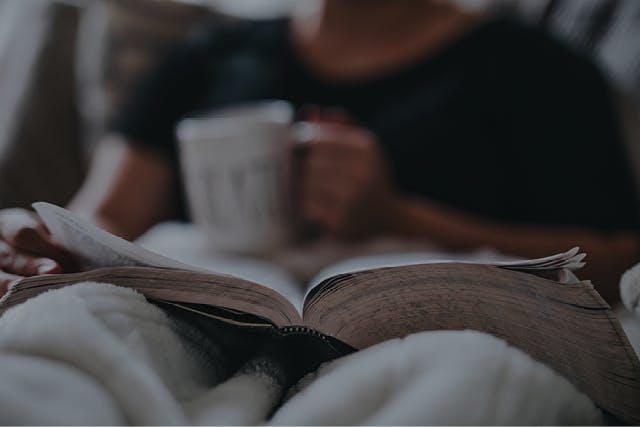How to Maximise Your Ultradian Rhythm

Ever wonder why you get tired at particular times of day (like the 3 o’clock slump), but feel energised or get a second wind later?
These peaks and troughs are usually in-line with something called the ultradian rhythm, and can be the key to improved productivity and even a restful sleep. How? Let’s delve into these biological rhythms to help you get the most out of your natural sleep style.

What is an ultradian rhythm?
You might have heard of your circadian rhythm, but your ultradian rhythm is a little bit different.
Your ultradian cycle, or ultradian rhythms, are biological cycles that all humans share. ‘Ultradian’ simply means ‘many times a day’, and there’re many cycles occurring within the body that follow this—breathing, heart rate, and appetite to name a few. The ones we’re interested in here though, are called ‘basic rest-activity cycles’, also known as BRACs.
More about BRACs
These cycles repeat throughout the day, following higher and lower levels of brain activity. This allows you to do focused work, followed by rest to give your brain a chance to recharge. Everyone’s cycle is different, but if you pay close enough attention, you’ll soon be able to pick up on the subtle cues your body shows when it needs to take a break.
Interestingly, the first ultradian rhythm studied in humans was the sleep cycle, which follows a similar pattern of peaks and troughs, cycling you through light sleep, deep sleep, and REM sleep.
How long is an ultradian rhythm?
Everyone is different, but the ultradian cycle generally lasts for 1.5 to 2 hours. During this period, your level of focus gradually rises to a peak, and then falls at the same rate until it’s your focus begins to wane: it’s break time for your brain again.
If you pay attention to how you feel during periods of intense focus, you’ll begin to recognise when your attention falls and you need a rest. With more of us working from home, it’s important to set up a dedicated workspace that you can step away from and take a break. A good rule of thumb to start is 60-90 minutes working, followed by a 20 or 30 minute rest.
What is the ultradian rhythm controlled by?
While we don’t completely understand it, we do know your ultradian rhythm is a biological, measurable pattern your body needs to function. While it’s ultimately controlled by your body’s internal clock, there are a few factors that can interrupt it.
What can disrupt the ultradian rhythm?
When our bodies are telling us to slow down, it’s not always easy to listen. The 9-5 workday, family commitments, caffeine, stress, and adrenaline can all get in the way of our need for periodic rest.
By listening to your innate ultradian rhythm you’ll find that you can work in periods of deep focus, followed by a short period of resting, helping to increase your productivity and concentration.
Luckily, ultradian rhythms come around regularly, so all is not lost! The key is taking note of when you’re feeling tired and trying to schedule a small break. Some activities that may work as a good ‘reset’ in your break time include:
- Doing the opposite of what you’ve been doing. If you’ve been sitting, go for a walk; if you’ve been exercising or performing a manual task, sit down.
- Taking a break from screens.
- Making a healthy snack.
- Having a power nap (approx. 20 minutes).
Ideally, you’re giving your brain a good rest from intense focus, so while there’re lots of ways to do this, the main goal is that it shouldn’t be mentally taxing. Instead, give your mind the chance to switch off and relax.

The difference between circadian and ultradian rhythms
The main difference between circadian and ultradian rhythms is their length. Circadian rhythms tend to last around 24 hours as opposed to the much shorter ultradian rhythms that last about 1.5 to 2 hours.
There’s also a difference in how they’re controlled. Circadian rhythm, or our 24-hour ‘sleep/wake cycle’, is controlled by melatonin, a hormone produced in our brains that promotes sleep. When it’s dark, our brains increase melatonin production and we become tired. Although it generally follows this light/dark pattern, everyone’s circadian rhythm is unique, with some of us being early birds, others being night owls, and many falling in between.
It can be tricky at first to read the cues of our ultradian rhythms. Modern life is so busy we’re used to ignoring these internal signals and powering through. But if you take the time to pay attention to what your body’s telling you, you’ll get the hang of it. Remember when it comes to getting a good night of sleep, there are many other factors that can contribute to it. Head over to our blog to find other helpful tips like how to fall asleep fast.
References:
https://www.asianefficiency.com/productivity/ultradian-rhythms/
https://www.bluezones.com/2020/06/how-taking-breaks-can-increase-productivity-boost-energy-levels-and-help-you-show-up-in-your-life/#
https://www.mattressnerd.com/polyphasic-sleep/science/brac/
https://greatergood.berkeley.edu/article/item/the_quiet_secret_to_success
https://sleepunlimited.co.uk/2017/01/30/the-human-circadian-rhythm/
https://www.studentwellbeingblog.com/post/circadian-rhythm-dictates-our-sleep-but-it-s-ultradian-rhythm-that-determines-our-daily-function
https://exploringyourmind.com/ultradian-rhythms-and-productivity/